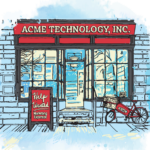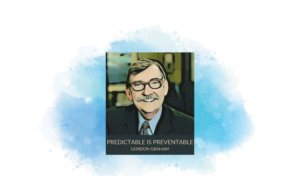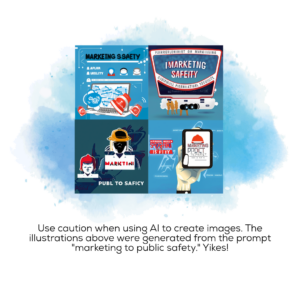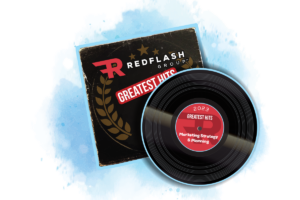
It’s easy to take the process of creating a winning name for granted. Without thinking strategically about what you want the name of a new public safety product or service to accomplish, you could haphazardly brainstorm ideas that don’t serve your intended purpose. You might come up with something that’s merely descriptive or superficially clever. Or you could choose an acronym that’s not easy to remember or simple to pronounce (this happens a lot).
But that’s mostly settling. We believe you can do better. Even if a company, service or product can overcome a bad or even average name, wouldn’t you rather sail with the wind at your back?
So what is a thoughtful naming process? It starts with asking yourself a few questions:
- What are you trying to accomplish with a name, beyond simply being descriptive?
- What audience(s) are you trying to reach?
- Does the name need to fit within an existing portfolio of products/services?
- How much effort do you want to invest in the naming process?
Public safety professionals tend to be very literal. When telecommunicators ask callers, “What is the nature of your emergency?” they’ll translate the caller’s response into actions that follow a specific protocol. The same is true for law enforcement interviews or paramedic patient care reports. The culture is risk-averse, and for good reason.
Since companies that serve public safety are often led by those who came from the industry, it should come as no surprise that so many names are acronyms—probably the least risky and least creative option for naming. (When we hire a new RedFlash employee who hasn’t worked in public safety before, we give them a cheat sheet of hundreds of commonly used acronyms. One of my favorites is NPSTC, pronounced “nip stick,” the acronym for theNational Public Safety Telecommunications Council. I can’t help feeling a tiny bit chagrined every time I use it in conversation.)
Beginning the Naming Process
Whether you’re a small organization, Fortune 500 company, government agency or nonprofit institution, you need to ask yourself and your team the questions posed above. Once you’ve got a sense of everyone’s answers, it’s time to explore different kinds of names to see what resonates most. Here are some common categories of names and examples of each:
- Descriptive/Functional: General Motors, American Airlines
- Evocative/Suggestive: Twitter, Amazon
- Founder: Ford, Disney
- Invented: Motorola, Google
- Experiential/Contextual: Apple, Oracle
- Combination of Words: RedFlash, PayPal
- Places: The Florida Project (which evolved into Walt Disney World), “30 Rock” (the TV show named after the landmark New York City building)
Many names are a combination of these types. For example, the Ford Motor Company takes the founder’s name and adds a functional phrase. PayPal is a mix of descriptive words, and the alliteration makes it easier to remember. A company’s acronym sometimes becomes better-known than its full name; think International Business Machines, known now simply as IBM.
What Are Your Naming Goals?
So what do you want to accomplish with your name? Or, put another way: Does the name need to be bold to distinguish itself in a competitive space? Or would a straightforward, clear and descriptive name establish credibility and be accepted by a diversity of stakeholders? Does the name need to fit within a family of other products, services or organizations? Some companies have naming schemes; for example, Apple now names the operating systems for its Macs after places in California (where the company is based) such as Yosemite, El Capitan, Big Sur and Monterey. For years, Google’s Android operating systems were named after a sweet treat or dessert.
You’ll also need to decide whether you want the name to be connected to your company’s overarching brand or set apart from it. This is a strategic question related to how the product or service might eventually be spun out into a separate company or even sold. Software companies often bring customers and prospects together in user group meetings to learn about new features or industry trends. While many companies simply call these meetings something like “The ACME Public Safety User Group Meeting,” others have found using a different kind of name sets them apart and often finds a broader audience beyond their hard-core customer. A case in point isESO, the public safety ePCR and software company. They named their user group meeting “The Wave,” an evocative name that promised something more (and has lived up to that.)
Not all names carry the same weight, of course. So consider how important this one is to your organization and who should participate in the naming process beyond the marketing department. A big initiative that seeks to change the world clearly warrants a more in-depth process and the participation of more stakeholders than naming a new software feature that might simply need a descriptor. Based on the name’s relative importance, you may need to bring in the CEO, sales team and/or product manager; we suggest erring on the side of inclusion. And of course you might want to seek outside help if the stakes are high and naming and branding aren’t among your team’s core strengths.
Real-World Examples of Public Safety Names
At a recent public safety conference I stopped by a booth where a sales rep was demonstrating a new product that offered an innovative patient-handling device. I noticed, though, that the product name on the collateral had been blacked out. The rep explained that several people at the conference had commented that the name, while evocative and descriptive, misappropriated another culture in a way some thought off-putting, even offensive. So rather than come up with a new name on the spot, they ditched the old one for something generic. I think this product is useful and will ultimately be successful, but the company could have avoided these headwinds with a little more investment in a thoughtful naming process—one that included vetting potential risks.
A couple of case studies we’ve worked on in public safety also stand out for their results, scale and impact. A few years back, RedFlash Group was brought in to help name a major global initiative launched by one of our clients. The stakes were especially high because the client had already invested a lot of money and effort in finding a name, yet their team couldn’t reach a consensus. Dozens of people, including the CEO, needed to be satisfied with the final decision. In the end, the name we created was a unique combination of two words, both experiential and descriptive. It turned out to be the right fit and was quickly embraced by the team, an outcome we credit primarily to the process we used which is designed to be collaborative, inclusive and confidence-building.
Another interesting case is theUtstein Style. Before 1990, researchers didn’t have common, agreed-upon definitions when talking about sudden cardiac arrest and resuscitation. Without standardized reporting of processes and outcomes, there was no way to compare the results of different procedures, or even what was meant by “survival rate” among dozens of other interventions. To solve this, in June 1990 theLaerdal Foundation (the nonprofit sister organization of Laerdal Medical, a prominent resuscitation company) gathered esteemed experts from resuscitation associations around the world to study the problem. The meeting was held in a medieval building that had been converted into a modern conference center called the Utstein Abbey, on an island near Stavanger, Norway, where the foundation is headquartered. The results of that conference came to be called the Utstein Style and surprisingly enough, the name Utstein became part of the vernacular of resuscitation professionals around the world.
The Eight Attributes of a Great Name
You’ve learned how to kick off the naming process and about different types of names. So what are the characteristics that make the right name truly resonate? Clearly, these vary, but the list below is widely accepted by marketers. Together, these attributes indicate how well a name will tell your brand’s story:
- Positioning: Does the name represent the initiative/product/service/company, especially compared to competitors who are also vying for your intended audience’s attention?
- Distinctiveness: How much does it differ from other names already out there in the public safety domain?
- Energy: Does the name connote action and movement, as opposed to passivity or stagnation?
- Warmth: Is it friendly and accessible, or more technical, even cold?
- Usability: Is the name (or part of it) widely used and understood in your industry?
- Memorable: How easy will the name be to remember? Will it be difficult to recall the URL of your website?
- Depth: Does it have an obvious meaning as well as a deeper meaning, something more the word(s) invoke or imply?
- Practicality: How easy is the name to say? What does it look like when written? Could it be confusing?
If nothing else, I hope you take away from this post a greater appreciation for the power of names to telegraph a story about your brand or one of its offshoots. While public safety professionals tend to lean on descriptive names and acronyms, there are clearly plenty of routes you can take to help differentiate what you do and better tell your story.
With that in mind, I’ll leave you with one last example: Most of the trade shows in the 911 space are simply named after their associations, such as the APCO or NENA conference. When theInternational Academies of Emergency Dispatch wanted to create a new meeting more than 20 years ago, they created theNavigator conference—an evocative name that set them apart and helped them sail to success.
If you’re looking for help with naming or branding or would like to talk about marketing to public safety organizations,we’d love to talk.
Related Posts
-
Selling to public safety is not the same as selling in other industries. Discover 3…
-
No doubt you know all about the Great Resignation. According to the latest Job Openings…
-
It’s easy in tough economies to want to bypass strategy and go straight to tactics.…









 The RedFlash Group is a GSA Contract Holder under Schedule 541, Advertising and Integrated Marketing Solutions
The RedFlash Group is a GSA Contract Holder under Schedule 541, Advertising and Integrated Marketing Solutions